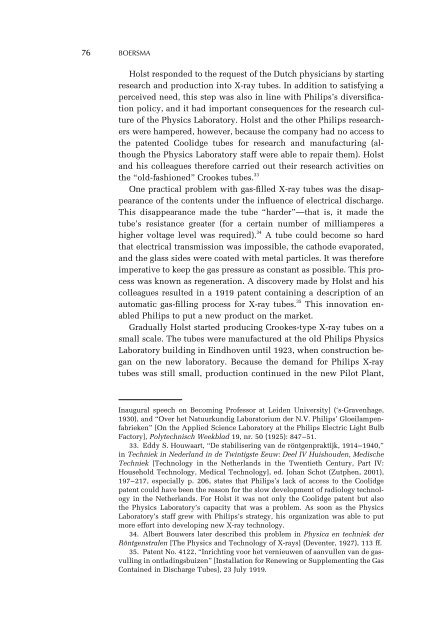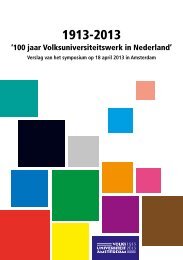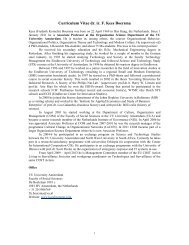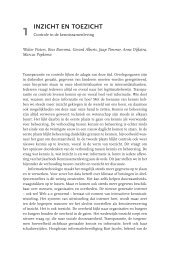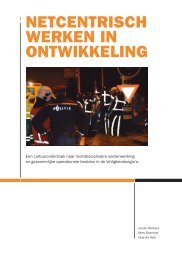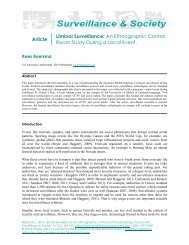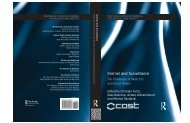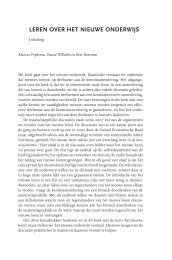Access article in PDF - Project MUSE - Johns Hopkins University
Access article in PDF - Project MUSE - Johns Hopkins University
Access article in PDF - Project MUSE - Johns Hopkins University
You also want an ePaper? Increase the reach of your titles
YUMPU automatically turns print PDFs into web optimized ePapers that Google loves.
76 BOERSMA<br />
Holst responded to the request of the Dutch physicians by start<strong>in</strong>g<br />
research and production <strong>in</strong>to X-ray tubes. In addition to satisfy<strong>in</strong>g a<br />
perceived need, this step was also <strong>in</strong> l<strong>in</strong>e with Philips’s diversification<br />
policy, and it had important consequences for the research culture<br />
of the Physics Laboratory. Holst and the other Philips researchers<br />
were hampered, however, because the company had no access to<br />
the patented Coolidge tubes for research and manufactur<strong>in</strong>g (although<br />
the Physics Laboratory staff were able to repair them). Holst<br />
and his colleagues therefore carried out their research activities on<br />
the “old-fashioned” Crookes tubes. 33<br />
One practical problem with gas-filled X-ray tubes was the disappearance<br />
of the contents under the <strong>in</strong>fluence of electrical discharge.<br />
This disappearance made the tube “harder”—that is, it made the<br />
tube’s resistance greater (for a certa<strong>in</strong> number of milliamperes a<br />
higher voltage level was required). 34 A tube could become so hard<br />
that electrical transmission was impossible, the cathode evaporated,<br />
and the glass sides were coated with metal p<strong>article</strong>s. It was therefore<br />
imperative to keep the gas pressure as constant as possible. This process<br />
was known as regeneration. A discovery made by Holst and his<br />
colleagues resulted <strong>in</strong> a 1919 patent conta<strong>in</strong><strong>in</strong>g a description of an<br />
automatic gas-fill<strong>in</strong>g process for X-ray tubes. 35 This <strong>in</strong>novation enabled<br />
Philips to put a new product on the market.<br />
Gradually Holst started produc<strong>in</strong>g Crookes-type X-ray tubes on a<br />
small scale. The tubes were manufactured at the old Philips Physics<br />
Laboratory build<strong>in</strong>g <strong>in</strong> E<strong>in</strong>dhoven until 1923, when construction began<br />
on the new laboratory. Because the demand for Philips X-ray<br />
tubes was still small, production cont<strong>in</strong>ued <strong>in</strong> the new Pilot Plant,<br />
Inaugural speech on Becom<strong>in</strong>g Professor at Leiden <strong>University</strong>] (‘s-Gravenhage,<br />
1930), and “Over het Natuurkundig Laboratorium der N.V. Philips’ Gloeilampenfabrieken”<br />
[On the Applied Science Laboratory at the Philips Electric Light Bulb<br />
Factory], Polytechnisch Weekblad 19, nr. 50 (1925): 847–51.<br />
33. Eddy S. Houwaart, “De stabiliser<strong>in</strong>g van de röntgenpraktijk, 1914–1940,”<br />
<strong>in</strong> Techniek <strong>in</strong> Nederland <strong>in</strong> de Tw<strong>in</strong>tigste Eeuw: Deel IV Huishouden, Medische<br />
Techniek [Technology <strong>in</strong> the Netherlands <strong>in</strong> the Twentieth Century, Part IV:<br />
Household Technology, Medical Technology], ed. Johan Schot (Zutphen, 2001),<br />
197–217, especially p. 206, states that Philips’s lack of access to the Coolidge<br />
patent could have been the reason for the slow development of radiology technology<br />
<strong>in</strong> the Netherlands. For Holst it was not only the Coolidge patent but also<br />
the Physics Laboratory’s capacity that was a problem. As soon as the Physics<br />
Laboratory’s staff grew with Philips’s strategy, his organization was able to put<br />
more effort <strong>in</strong>to develop<strong>in</strong>g new X-ray technology.<br />
34. Albert Bouwers later described this problem <strong>in</strong> Physica en techniek der<br />
Röntgenstralen [The Physics and Technology of X-rays] (Deventer, 1927), 113 ff.<br />
35. Patent No. 4122, “Inricht<strong>in</strong>g voor het vernieuwen of aanvullen van de gasvull<strong>in</strong>g<br />
<strong>in</strong> ontlad<strong>in</strong>gsbuizen” [Installation for Renew<strong>in</strong>g or Supplement<strong>in</strong>g the Gas<br />
Conta<strong>in</strong>ed <strong>in</strong> Discharge Tubes], 23 July 1919.


